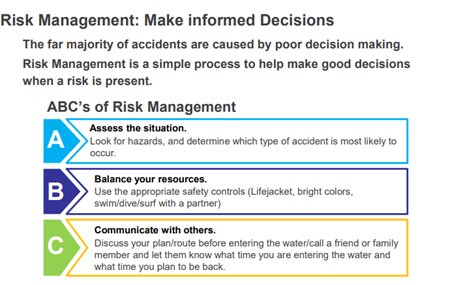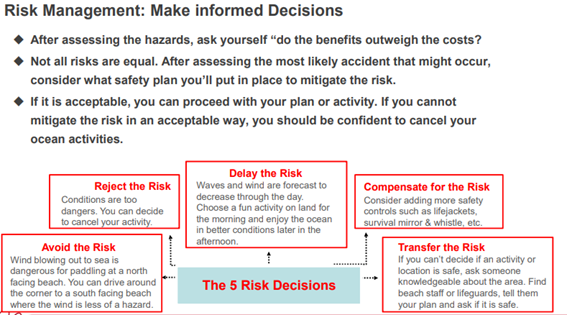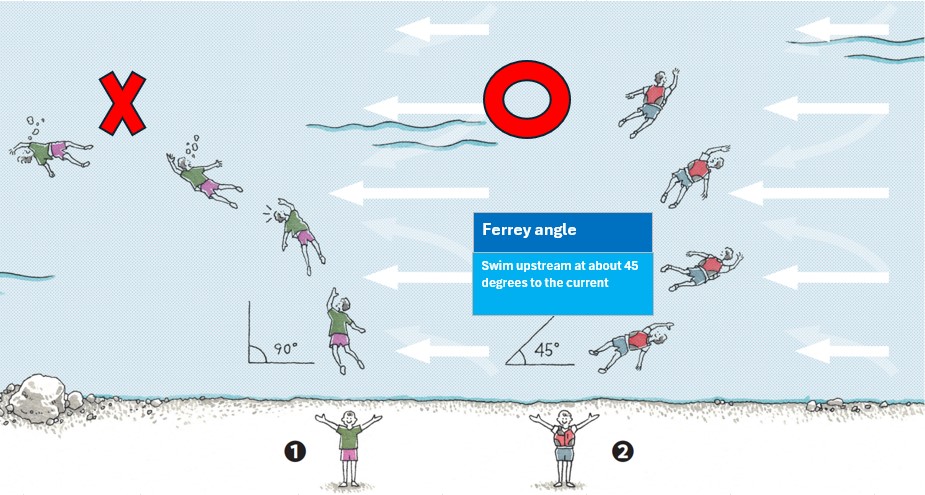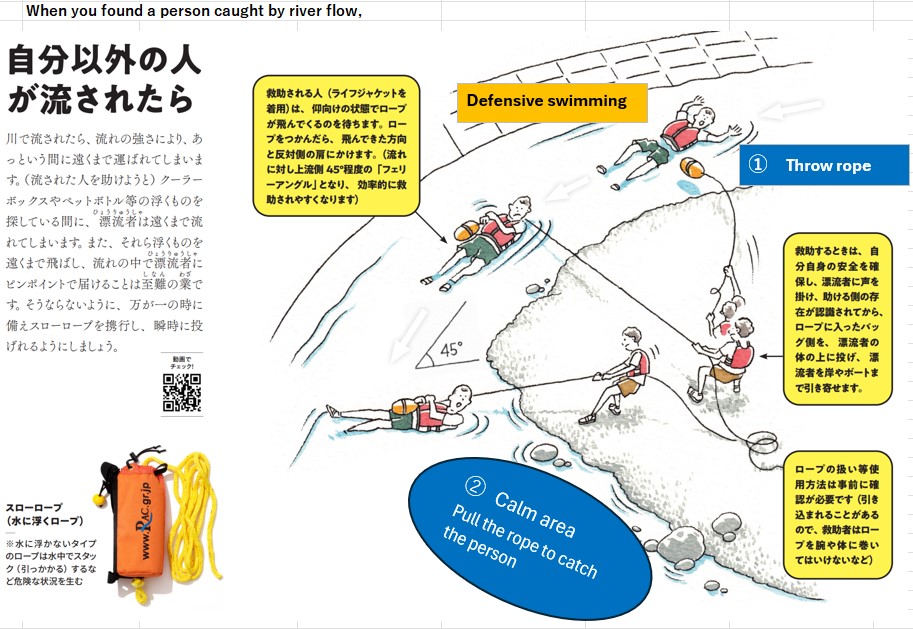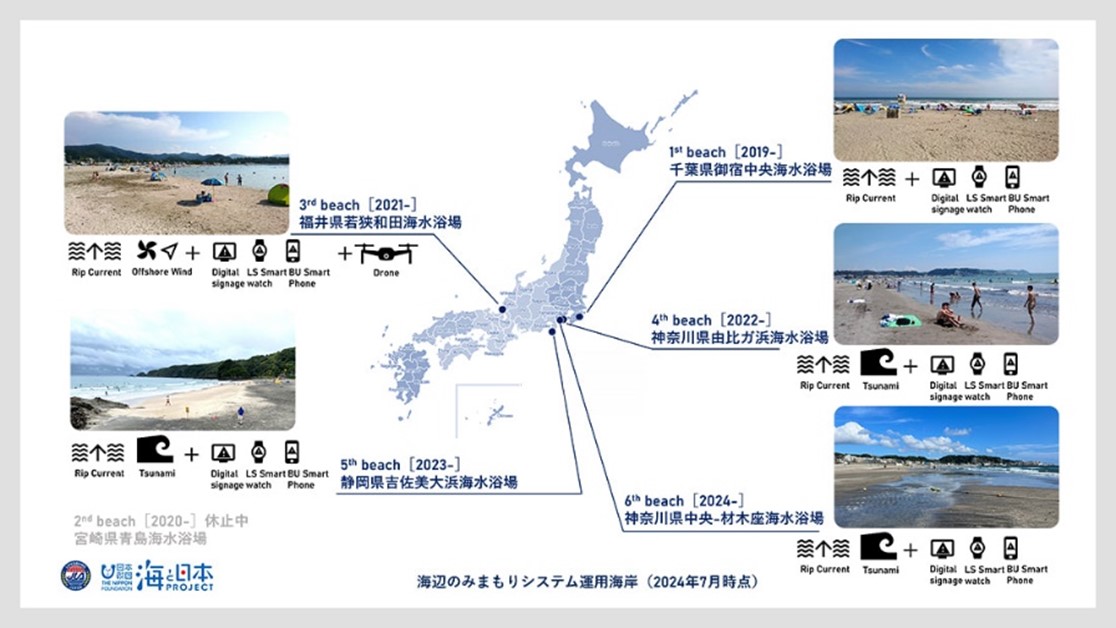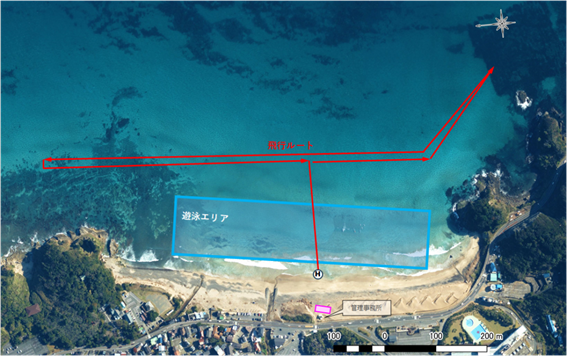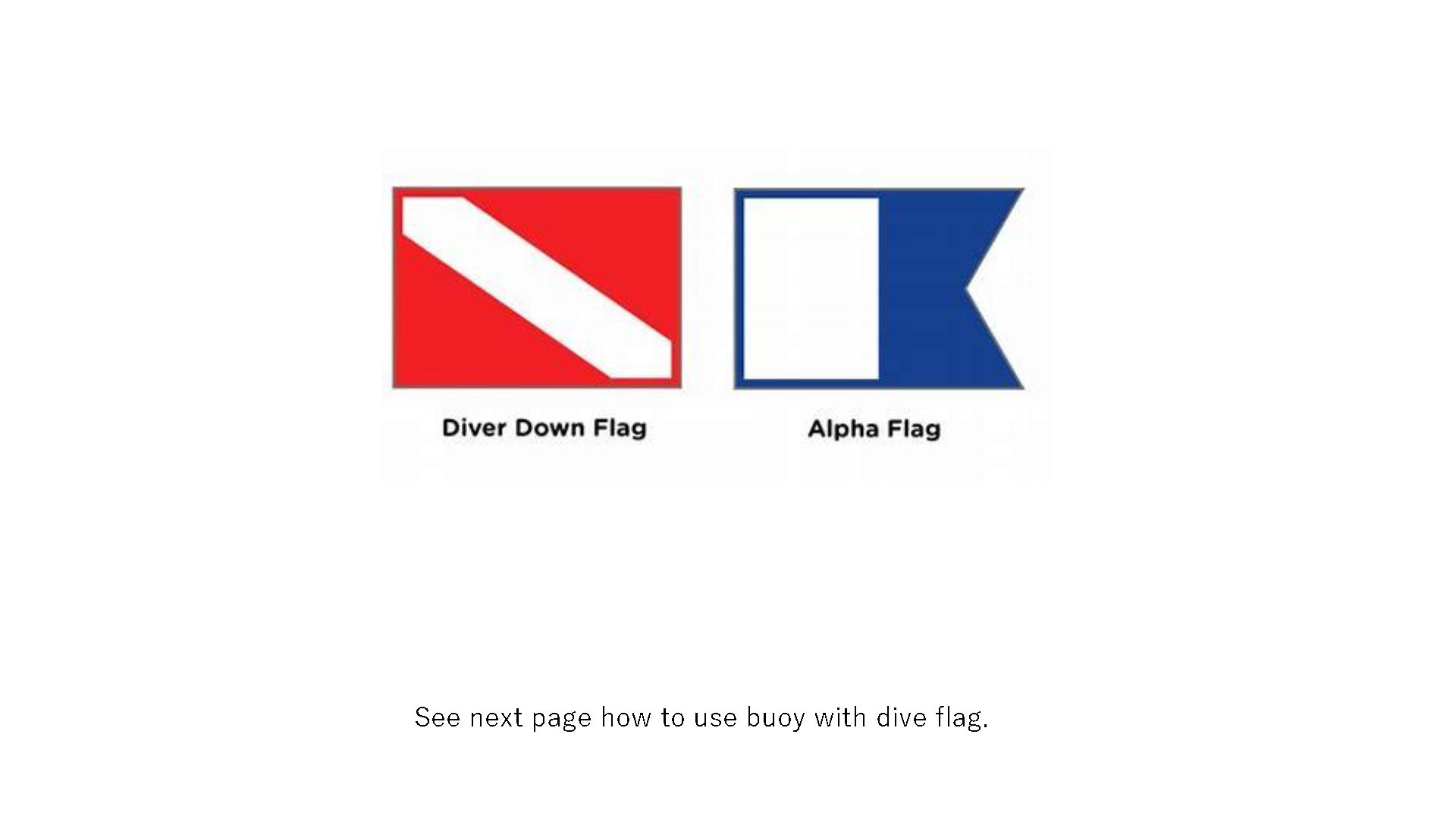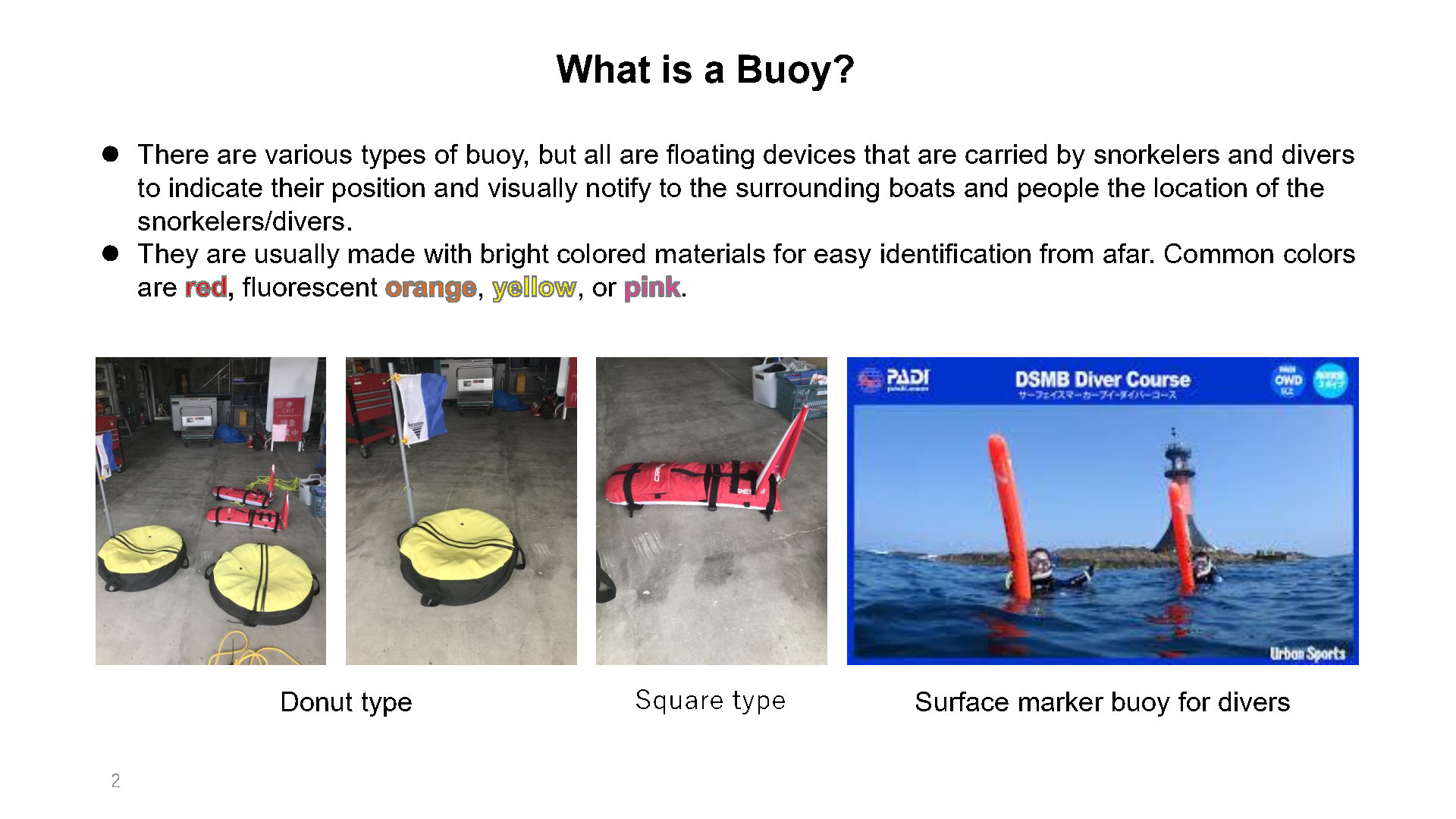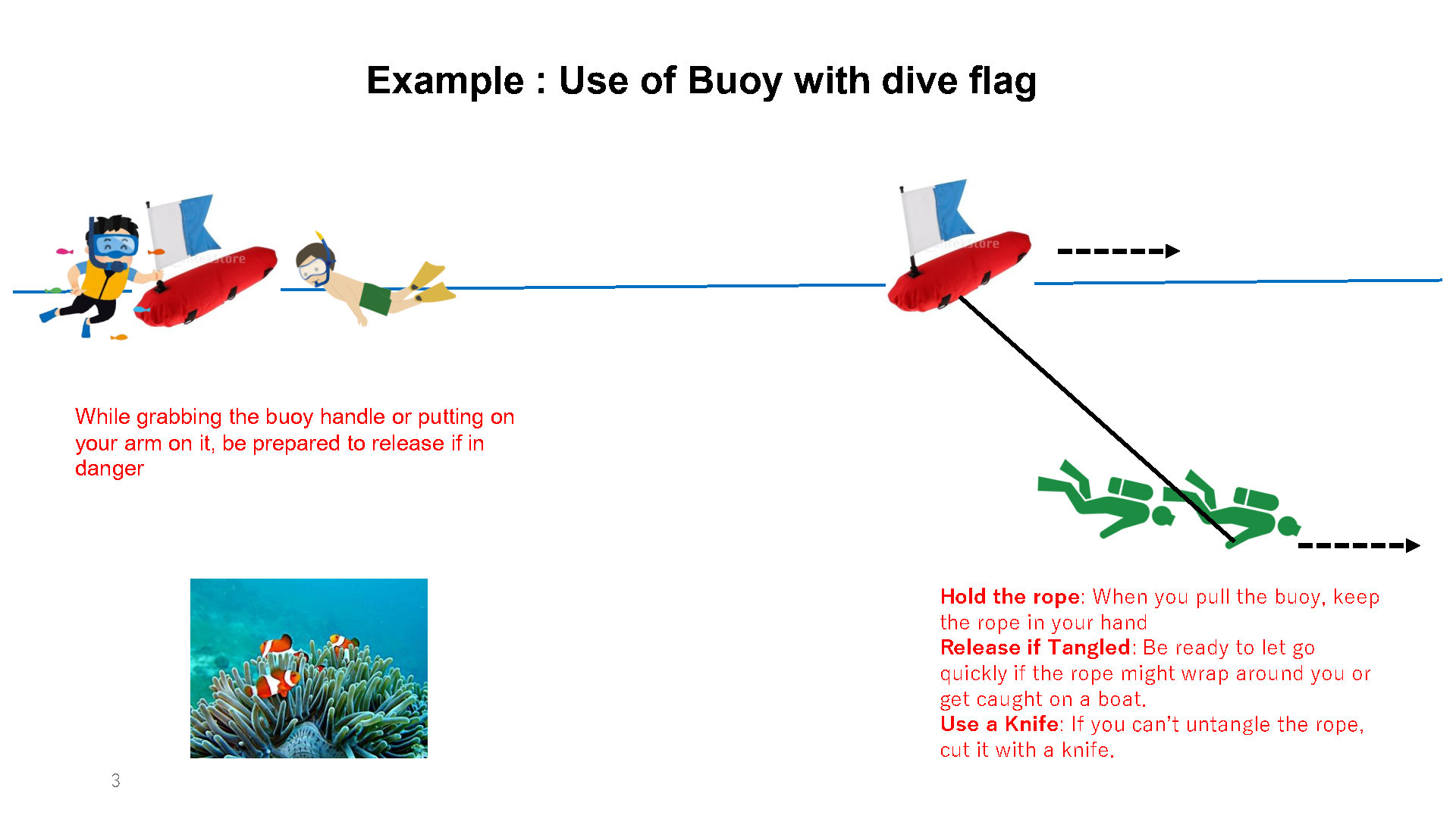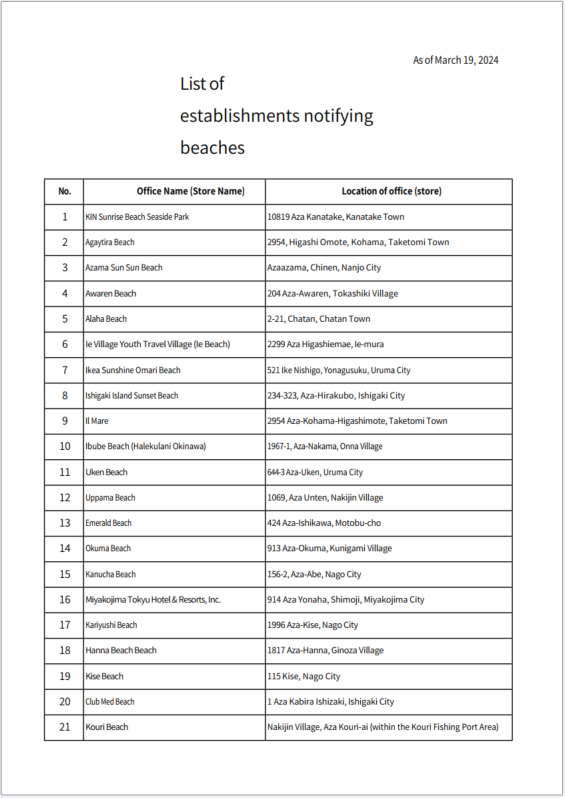Water Safety updates
updated on 25th October 2024
Tips for marine leisure in winter
- Characteristics of weather on Okinawa Island
As December comes and winter gets stronger, the skies over Okinawa become cloudy more often. The average winter temperature is about 18℃, like spring on the mainland. However, strong north winds from the continent can make it feel colder than it actually is.
- General tips for activity:
-Wear appropriate PPE, such as wet suit to prevent Hypothermia.
-Jacket to protect the body from the cold wind.
-Check the weather forecast and sea conditions, and only go into the sea if it is appropriate for your abilities.
-Stay with group, never go alone.
-Never go in water with alcohol.
For more details, please visit here
OIST water safety training materials are also on website of Naha Coast Guard office.
updated on 11th October 2024
Characteristics of wind on Okinawa, toward Winter
During Autumn to November, seasonal northerly wind starts prevailing.
Cautions are required for marine activities due to the northerly wind generating high waves.
It is important to obtain information on weather and sea condition, then you may get in ocean when the sea/weather condition meet your skill level.
Please stay safe!
Characteristics of Autumn (September to November)
In autumn, the Pacific High Pressure weakens. Low- and high-pressure systems move over Japan from west to east. This causes temperatures to gradually decrease, alternating between warm and cold. In October, winds from the high-pressure system over the continent start to blow. Gradually, northeast winds become more common, leading into winter.
Characteristics of Winter (December to February)
In winter, the pressure pattern is high in the west and low in the east. The Siberian High extends to the East China Sea, causing strong seasonal winds to blow from the East China Sea to Okinawa. These winds warm up by absorbing moisture from the sea, leading to many cloudy and rainy days.
updated on 5th October 2024
Box Jelly fish outbreak advisory was lifted
The advisory about the box jellyfish outbreak issued by Okinawa Prefecture Government was lifted on September 30th.
Even though the advisory has been lifted, the box jellyfish still live and the number coming to near the beach has just decreased. Please continue to pay attention NOT to get stung when act in the ocean.
In case get stung, please refer following issued by the Okinawa government.
Chinese Box Jelly fish advisory
Updated on 27th September 2024
Risk Management for Ocean Activity
Risk management is the process of identifying, assessing, and taking action to deal with potential risks you face, in order to prevent or minimize unexpected losses or damage, such as being prepared for changes in the natural environment is important.
Extracted from Naha coast guard office HP
Updated on 13th September 2024
Statics water accident by type of activity 2023 Jan-Aug vs 2024 Jan-Aug
Updated on 6th September 2024
The river hides a lurking danger beneath its serene surface (Part.3)
61% of water-related accidents involving children and young age (age 3-14) occur in rivers, lakes and ponds.
The fatal rate of young age is 2.7 times higher than sea! (%)
|
River |
Lake, pond | Sea | Waterways | Pool | Other |
| 48.5 | 13.2 | 22.6 | 9.1 | 4.8 | 1.8 |
We would like to explain in three parts starting from today.
Part 1: Statics fatalities involving young age (Aug 23)
Part 2: Secondary accident while rescue operation by a person nearby (Aug 30)
▶Part 3: Risks and countermeasure (Sep 6)
1. Risk and Coutermeasures, how to prevent from drowning accidents in rivers
It is difficult to see rivers beneath water's surface from the land.
Rivers beneath the water’s surface are challenging to observe from land. Even if the river appears shallow where you are standing, it may become deep just a step ahead. The interior of a river is difficult to see from land, making it hard to determine whether the river is shallow or deep, especially since the water’s surface reflects light. The flow of a river is influenced by the river’s shape, the topography of the riverbed, and the flow rate. Specifically, there are deeper areas outside the bends due to erosion. In these areas, the water surface may seem calm, but beneath, there is an invisible, complex current that pulls water towards the river bottom. Additionally, there may be deeper sections near river structures due to local washouts and ditches.
2. Near miss top three experienced by the leaders of river activties
1. Slip
Many seawalls and shallow stones at the water’s edge are covered with moss, making them very slippery. Even dry stones and concrete can become slippery when wet. If someone slips and is swept into the main stream or deeper parts of the river, it can result in drowning.
2. Swept away, swept a leg by a river
At first glance, a river might seem calm. However, once you enter the water, the current is often much faster than expected. The speed of the flow can change in different areas. Even if the river is shallow, the flow can still carry you into deeper water.
3. Fall off, ground collapses
It can be hard to see through the vegetation, and sometimes you might step onto what looks like land, only to find that you are already in the river. Additionally, even at the water’s edge, there are areas where the soil and sand can easily collapse.
3. Water itself is a risk, such as:
1. Cannot breath
If water accidentally enters the airway, it triggers a severe cough reflex, preventing normal breathing. Advanced swimmers can float on their backs and cough repeatedly to expel the water safely. However, beginner swimmers cannot do this, and the violent cough reflex stops them from breathing, which can lead to death. Water entering through the nose can block the Eustachian tube, which connects to the ears, and affect the semicircular canals that regulate balance.
2. Loss of body heat
The thermal conductivity of water is more than 20 times that of air. For humans, the continuous loss of heat can be life-threatening. It is important to prevent the loss of body heat as much as possible during activities by wearing clothes that can dry easily even when wet or by wearing a wetsuit.
3. Flow exists
Unlike a school pool, water in a river flows continuously. For example, at a speed of 1 meter per second, the water moves 1 meter every second. In just a few seconds, the water can move to a place that is out of reach from the land. In a fast-moving river, even if people around you notice and try to help, you can be swept downstream or to the bottom of the river, making it impossible to take any countermeasures.
4. The flow is strong
Rivers have currents. Depending on the topography, volume of water, and other factors, the flow creates a complex and tremendous force.
We cannot resist these forces. To avoid danger, it is important to recognize the flow of water.

Prevention first!
River accident happens in an instant. If you can't breathe, the situation can be fatal in about a minute. It also takes several minutes or more for the fire department to arrive. In general, rescuing a person in the water is extremely difficult. Furthermore, the currents in the river mean that the situation changes from moment to moment. Therefore, it is of utmost importance to prevent accidents from happening!

If you caught by the river flow,
1.Do not attempt to stand up. In areas with fast flow, float or swim without standing up, even if the river is shallow and you can almost stand on your feet.
2. Do not attemp swim back to where you were
3. Find a calm area and evacuate to there

Updated on 30 August 2024
The river hides a lurking danger beneath its serene surface (Part.2)
Part 1: Statics fatalities involving young age (Aug 23)
▶Part 2: Secondary accident while rescue operation by a person nearby (Aug 30)
Part 3: Risks and countermeasure (Sep 6)
Secondary incident occurred in 14% of rescue operations
Statics rescue operation was carried out or not
One of the most notable features of secondary accidents during rescue operations is that many of them occur in groups that include children. When the first accident occurs in a “family group,” “group of young age” or “group of Adult + young age” the accompanying person often jumps into the water to save the drowning child. This action frequently leads to a secondary accident. In such cases, the severity of the secondary accident often results in death or missing. Many victims of these secondary accidents are parents, adults, or older children who were with the initial victim.
Rescuing a drowning person involves high risks, so it is important to use low-risk methods whenever possible. To ensure your own safety, try to perform the rescue from land and stay out of the water if you can. There is a significant difference in risk between rescuing someone on land and rescuing someone in the water. Even though the risk levels of Level 3 and Level 4 are close, the danger increases greatly. To prevent secondary accidents, rescuers should always wear life jackets.
Throw bag technics:Put floatable rope into a small bag and throw to a person who needs help
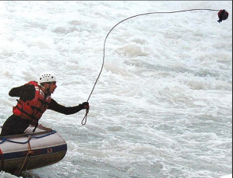
Make a group and across the river
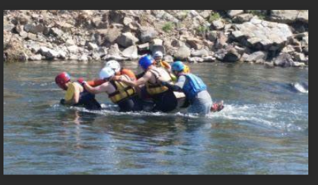
Updated on 23 August 2024
The river hides a lurking danger beneath its serene surface (Part.1)
All data in here are from Japan River Foundation
61% of water-related accidents involving children and young age (age 3-14) occur in rivers, lakes and ponds.
The fatal rate of young age is 2.7 times higher than sea! (%)
|
River |
Lake, pond | Sea | Waterways | Pool | Other |
| 48.5 | 13.2 | 22.6 | 9.1 | 4.8 | 1.8 |
We would like to explain in three parts starting from today.
▶Part 1: Statics fatalities involving young age (Aug 23)
Part 2: Secondary accident while rescue operation by a person nearby (Aug 30)
Part 3: Risks and countermeasure (Sep 6)
Statics fatalities involving young age
Number of water victims by age 年代別水難者数 (%)
| Infant 幼児 |
Elementary school age (6-11) 小学生 |
Junior high school age (12-15) 中学生 |
High school age 高校生 |
University age 大学生 |
Adult 大人 |
Old 高齢者 |
Unknown 不明 |
Total |
| 4.6 | 13.0 | 5.4 | 5.0 | 7.8 | 40.2 | 19.1 | 4.9 | 100.0 |
A quarter of river-related fatalities are children under junior high school age.
Patterns of accidents that occur when infants, elementary school age, junior high school age and high school age students play in the river
幼児、小学生、中学生の川遊びに見受けられる事故パターン
Remember!
1. Cannot breath in water
2. Difficult to float in the river. Rivers have complex currents that make it difficult to stay floating.
WEAR LIFE JACKET!!!!!
Updated on 16 August 2024
Six habits for water safety at the Beach
When you visit the beach or any water area, please follow these 6 safety steps:
-
Check Information: Look at the weather forecast. Check the temperature, wave size, wind speed and direction, and any warnings.
- Tell Someone: Let your family know who you’re going to the beach with and where you’re going.
- Prepare Your Gear: Use sunscreen and sunglasses to protect from the sun. Drink water to avoid heat stroke. Wear a life jacket that fits you well to prevent accidents in the water.
- Observe: When you get to the beach, check if it’s safe to swim. Don’t go into the water right away. Watch the ocean for 5 to 10 minutes. Look at the waves to see if there are strong currents or deep areas. Check the wind direction and any flags. If you’re not sure about something, ask a lifeguard. Also, know where to go if there’s a tsunami warning.
- Always Watch: Keep an eye on everything! If you’re with kids, make sure an adult is always with them. Keep them close and never lose sight of them. Adults should swim in deeper water and stay between the kids and the beach. This way, you can react quickly if something happens. If you’re with a group, look out for each other. It’s also good to have someone stay out of the water to watch everyone, or to swim with a buddy.
- No drink, no swim: if you’ve been drinking, don’t swim. It’s very dangerous. And don’t forget to protect yourself from the sun and heat and take breaks while you play. Enjoy your time at the beach safely!
6つのチェック行動
いつも海や水辺に遊びに行くときには、ぜひ次の5つのチェック行動をお願いします。
1.情報
天気予報を確認し,気温,波の高さ,風の強さや向き,注意報,警報を確認しましょう
2.周知
誰とどこの海に出かけることを家族に伝えましょう
3.装備
日焼け止めやサングラスなどの紫外線対策、飲み物などの熱中症対策,そして水難事故防止策としてライフジャケットを活用しましょう。ライフジャケットは体のサイズにあったものを正しく着用しましょう。
4.観察
海に着いたら泳いで良い遊泳エリアか確認しましょう。すぐに入水せず、5~10分は海を観察しましょう。波の大きさによって突発的に離岸流が発生しているかもしれません。水深が深そうな場所は波の砕け方でわかる場合があります。風はどちらに吹いているか、旗などを観察しましょう。危険な場所がわからなければライフセーバーに聞いてください。もしもの自然災害に備えて津波避難時の避難経路も確認してください。
5.利用
どんなときも Keep Watch(目を離さない)が大事!お子さん連れの場合は、必ず大人が子どもと一緒に遊んでください。手の届く範囲で、目を離さないようにしましょう。大人が海の深い方へ位置するよう入水し、沖側に大人→子ども→砂浜の順番で位置関係をとっておくと、何かあったときにすばやく対応できます。家族やグループで来ている時は、お互いを見守ることを忘れないでください。グループ全員で海に入らず、誰かは海に入らないで見守ることや、2人組みのバディで遊ぶことも事故防止に有効です。
6. 飲んだら、泳がない。飲酒後の入水は絶対にNGです。他にも、熱中症や紫外線対策を忘れずに、休憩をしっかりとりながら遊んでください。
8月「行動しよう Water Safety 月間」 | LIFESAVING SITE | 日本ライフセービング協会(JLA) (jla-lifesaving.or.jp)
Updated on 9 August 2024
Statistics of Water accident, first half of 2024
2024年上半期の水難事故発生状況
Citation R6年 8月号
Comment:
In Okinawa Prefecture, by the end of June, there were 49 water-related accidents, 55 victims, 17 fatalities, and no missing persons.
Compared to last year, accidents decreased by 3, victims by 34, and fatalities by 8. Despite this, the situation remains unpredictable with the summer marine leisure season approaching. Many accidents involved tourists snorkeling and diving, and residents fishing and kite surfing. To prevent accidents, always wear a life jacket, never go alone, avoid water activities if body condition is unwell, and check ocean and weather conditions before going out.
解説
沖縄県内では、今年上半期、6月末現在の水難事故は、発生件数49件、罹災者55名 死者数17名、行方不明者0名(暫定値)となっています。
前年比で、発生件数で-3件、罹災者数で-34件、死者数で-8名の減少となって いますが、これから、夏本番に向けてマリンレジャーシーズンも到来することから、 依然として予断を許さない状況が続いています。 上半期の事故の特徴として、観光客はスノーケリング、ダイビング中に罹災する事 故が多く、県民の事故は魚釣りやカイトサーフィン等のマリンレジャー中に罹災する ケースが目立っています。一人一人が水難事故を防止する対策として、マリンレジャ ー時は必ずライフジャケットを着用し、単独では海に入らない、体調不良時は海に入 らない。海の状況や気象・海象を必ず確認すること等を守って安全・安心にマリンレ ジャーを行いましょう。
Training material with marine safety and knowledge are available on E-front. Please refer to this.
海の安全や知識を載せたトレーニング資料がE-frontにありますので、参考にしてください。
OHS: Water Safety Training .. | My Courses | eFront LMS (oist.jp)
Updated on 2nd August 2024
Introduction of a new monitoring system for a beach area
海辺のみまもりシステム | LIFESAVING SITE | 日本ライフセービング協会(JLA) (jla-lifesaving.or.jp)
海辺のみまもりシステムは、離岸流による水難事故を防ぐため、海岸に設置されたWebカメラ画像をAIがリアルタイムで解析して離岸流発生を自動検知し、海岸利用者のスマートフォンに通知します。さらに早期救助救命のため、離岸流エリアに人が流されるとライフセーバーのスマートウォッチに救助要請します。また、オフショア発生時(沖向きの風)にも海岸利用者のスマートフォンに通知し、注意喚起を行います。現在国内5か所で運用されています。
The beach monitoring system is designed to prevent maritime accidents caused by rip currents. This system utilizes web cameras installed along the coast. The images captured by these cameras are analyzed in real time by AI to automatically detect the occurrence of the rip currents. Notifications are then sent to the smartphones of beach users. This system serves as a proactive measure to enhance safety along the coast.
For prompt rescue and lifesaving, if a person is swept into the rip current, a rescue request is sent to the lifesaver's smartwatch. In addition, when offshore winds occur, the system also notifies beach user's smartphones and alerts them to the situation. This system is currently in operation at five locations.
ドローンによる海面パトロール
ドローンパトロールの導入は、監視活動の効率化と安全性の向上を目的としています。ドローンによる上空からの監視は、広範囲の状況を迅速に把握することができ、緊急時には迅速な対応が可能となります。これにより、ライフセーバーの負担軽減と監視精度の向上が期待されます。(図の赤線がドローンによるパトロールルート、青線が指定された遊泳エリアです)現在は静岡県下田市白浜大浜海水浴場で実施されています。
Drone water patrol
The introduction of drone patrols is intended to improve the efficiency and safety of monitoring activities. Monitoring from sky by drone allows for quick assessment of a wide range of conditions and enables prompt response in the event of an emergency. This is expected to reduce the burden on lifesavers and improve monitoring accuracy. (Red line is the route for patrol, blue is designated swimming area) It is held at Shirahama Ohama Beach in Shimoda City, Shizuoka Prefecture.
下田ライフセービングクラブ、ドローンによる海水浴場パトロール開始 - ドローンジャーナル (impress.co.jp)
Updated on 26th July 2024
Alert: Post-Typhoon Hazards
Typhoon No. 3 is currently sweeping across Okinawa. It is crucial to understand that even after the typhoon has moved on, the aftermath can be just as dangerous. Swells and towering waves may persist for several days.
If the sea conditions appear to be hostile, it is strongly advised to refrain from entering the ocean. Your safety is paramount.
Furthermore, Typhoon No. 3 is moving at a slow pace, which may result in sustained strong winds and high waves over an extended period. Stay vigilant and prioritize your safety above all else.
台風通過後にも引き続き注意を!
台風3号が沖縄を通過しています。通過してもうねりや高波が数日残る可能性があります。海況が好ましくない場合、安全のため海に入るのは避けましょう。
台風3号は速度が遅く、強風や高波の影響が長引く可能性があります。
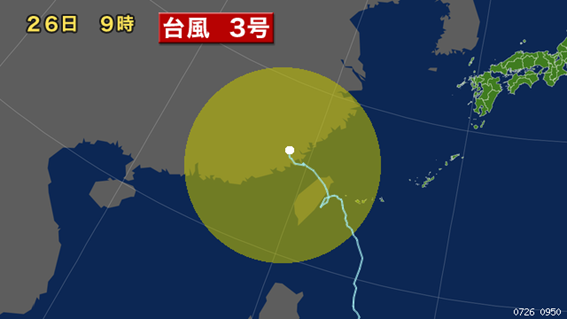
Updated on 19th July 2024
What if Tsunami hits? Let us learn about Tsunami
Please visit the links below.
EN, JP, Link to Tsunami Warning and Advisory

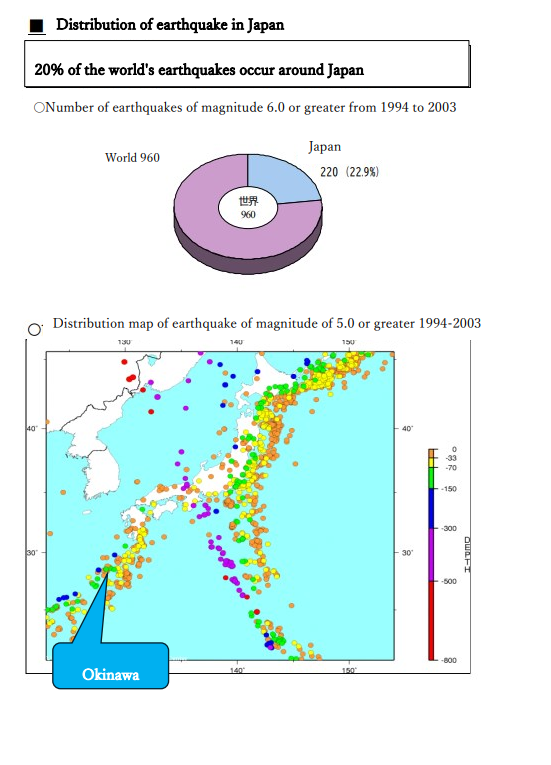
Updated on 12th July 2024
Woman rescued off Chiba 36 hours after going missing in Shizuoka
Please click here for detailed information.
Tips for your safety at sea
- Swim in controlled area with lifeguard post available. English 日本語
- Do not go in water alone. Stay with your buddy.
- Wear life jacket
- Put your smart phone in waterproof pouch and bring it with your while swimming.
- Bring lighting device (survival mirror, flashlight), audio device (whistle)
- Beware of drifting in busy traffic area: you may be found, however, possibility of colliding with a boat.
Please re-visit for more information at water safety training
Updated on 5th July 2024
Walking barefoot on the beach is dangerous
Okinawa is home to an extensive array of marine life, a portion of which is known to possess venomous characteristics. Each year, approximately 100 incidents involving harmful marine creature bites are reported in Okinawa. There are videos aim to provide an overview of some of the most frequently encountered marine species and the appropriate first aid responses should one become a victim. To ensure a safe and enjoyable experience at sea, it is crucial to arm oneself with accurate knowledge.
- Beware of Dangerous Sea Creatures! How to Enjoy the Sea Safely (20 min)(YouTube)
- Beware of Dangerous Sea Creatures! How to Enjoy the Sea Safely Box Jellyfish Edition (3 min)(YouTube)
Copied from Okinawa prefectural government HP Link
Updated on 28th June 2024
Introducing new method for cooling down your body against heat stroke!
(Japanese follows)
On June 20, the Japan Meteorological Agency declared the end of the rainy season in the Okinawa region. This conclusion came five days earlier than last year and one day ahead of the average schedule. As sunny weather prevails, the onset of intense heat is imminent. It is crucial to remain vigilant against heatstroke immediately after the rainy season. Several up-to-date cooling methods are available to mitigate the risk. Consider implementing these measures before, during, and after your activities both at sea and on land. Stay safe!
As a preventive measure against heat stroke during physical activities, we have implemented a trial ʻpalm coolingʼ initiative. Participants lower their body temperature by holding a cooling agent in the hands, which maintains its cooling effect for one to two hours. The key mechanism behind ʻpalm coolingʼ involves the arterio-venous anastomosis (AVA), which connects arteries and veins at the extremities of the body. AVAs are abundant on the palms,soles of the feet, and cheeks̶areas devoid of body hair. Although the palm surface area constitutes only 5% of the total body surface, blood flow through AVAs is 10,000 times greater than that through capillaries. When body temperature rises, the normally closed AVAs open, allowing a surge of blood into the palms, dissipating heat and subsequently lowering overall body temperature. In essence, the palms act as radiators for the body.
Link Kyoto University of Advanced Technology (Japanese only)
⼿のひらクーリングで熱中症予防!
6 ⽉ 20 ⽇、気象庁は「沖縄地⽅が梅⾬明けしたとみられる」と発表しました。昨年より 5⽇早く、平年より 1 ⽇早い梅⾬明けです。平年に⽐べて短い梅⾬となりました。この先は晴天が続き、本格的な暑さが到来します。梅⾬明け直後の熱中症に厳重な警戒が必要で
。熱中症対策はいくつも紹介されていますが、最新のクールダウン⽅法を紹介します。海、陸域での活動前、活動中、活動後に是⾮お試しください。
活動中の熱中症対策として 1 時間から 2 時間ほど冷却効果を保つ保冷剤を⼿で握って、体温を下げる「⼿のひら冷却」の取り組みを試験的に導⼊しています。「⼿のひら冷却」のメカニズムのキーポイントは、体の末端部分にある動脈と静脈をバイパスのように結ぶ
「AVA=arterio-venous anastomosis 動静脈吻合(どうじょうみゃくふんごう)」という⾎管にあります。この AVA は、体温調整の役割を担っています。AVA は、体⽑のない⼿のひらや⾜の裏、頬などに多く AVA が分布しています。⼈間の両⼿のひらの表⾯積は体全体の 5%ですが、AVA を流れる⾎液の量は、⽑細⾎管を流れる⾎液に⽐べて 1 万倍ほどあるため、⼿のひらや⾜の裏を冷やすことによって効率よく体を冷やすことができます。
AVA は普段は閉じられていますが、体温が上昇すると、AVA が開通し、⼀度に⼤量の⾎液を⼿のひらに送り込み、体内の熱を放出し、冷やされた⾎液を体に戻して体温を下げる
という仕組みになっています。「⼿のひら冷却」は、この AVA を効果的に冷やすことによって⾎液の温度を下げ、その⾎液が全⾝を循環することによって深部体温を下げようとするものです。⼿のひらはまさに体内のラジエーターの役割を担っているといえます。
Updated on 21st June 2024
Safety messages for divers business operators are released from the 11th Regional Coast Guard.
Headquarters issued via the Okinawa Marine Safety Bureau.
For Business Operators,
Stay safe during marine leisure activities in Okinawa
As the marine leisure season kicks into high gear, itʼs crucial to prioritize safety. Okinawa Prefecture has witnessed a series of unfortunate marine accidents recently, including divers drifting adrift and boats capsizing with passengers on board.
For both business operators and also boat captains are requested to implement the safety guidelines provided in the attached sheet, and captains are required prioritize safety management daily to prevent boat related accident.
Remember, safety first!
Link to original message (Japanese only)
Link to the Okinawa Marine Safety Bureau(Japanese only)
Note: The Okinawa Marine Leisure Safety Bureau (OMSB) Foundation is dedicated to preventing accidents associated with marine leisure activities in sea and inland-water areas
Prevention for Marine Accident for business operators
 Updated on 14th June 2024
Updated on 14th June 2024
Check sea conditions via live-camera
These two sites are major places for divers and snorkelers. Please check before visiting.
Stay Safe!!
- Cape Maeda 本日の海況 – 真栄田岬 (maedamisaki.jp)
- Sunabe アオカワダイビングサービス (aokawa.com)
旗の見方 How to read flag? (at Cape Maeda)
可能【○】![]() Wear PPE and life jacket on, swimming is possible depend on your skill level
Wear PPE and life jacket on, swimming is possible depend on your skill level
保護スーツ、ライフジャケットを着用し、自己スキルに応じて遊泳可能
注意【△】![]() Caution Wear PPE and life jacket on, swimming is possible depend on your skill level
Caution Wear PPE and life jacket on, swimming is possible depend on your skill level
保護スーツ、ライフジャケットを着用し、自己スキルに応じて遊泳可能
禁止【×】![]() Do not enter
Do not enter
遊泳できません
警報【×】![]() Do not enter, danger, stay away from sea
Do not enter, danger, stay away from sea
遊泳できません。津波注意報・その他警報が発令されています。危険ですので、海に近づかないでください。
Updated on 7th June 2024
Characteristics of Okinawa climate and wind
- Climate Overview:
- Okinawa experiences a sub-tropical climate with mild winters and long, muggy, and rainy summers.
- The main island of Okinawa, along with smaller islands like Kerama, Miyako, Ishigaki etc, share similar weather patterns.
- During summer (June to August), the region sees significant changes.
- Weather Patterns:
- Rainy Season: The rainy season, known as “Baiu” starts in May and continues into June. During this period, frequent rains and cloudy skies are common.
- Sunshine Hours: Sunshine is relatively scarce during the rainy season. However, after the rainy season ends in late June, sunny days become more frequent.
- Ultraviolet Rays: Okinawa experiences the strongest ultraviolet rays of the year during summer. Proper skin and eye protection are essential.
- Temperature and Humidity:
- Maximum Temperatures: While Okinawa is hot, maximum temperatures rarely exceed 35°C (95°F).
- Humidity: High humidity levels contribute to the muggy feel during summer.
- Typhoons:
- Typhoon Season: Typhoons tend to approach Okinawa during summer. It’s essential to stay informed about weather updates and take necessary precautions.
- Obon Holiday: August, when typhoons are more likely, coincides with the Obon holiday, leading to increased travel.
- Marine Activities:
- Summer is an excellent time for marine activities on the west coast of Okinawa. Clear waters and warm temperatures attract visitors for snorkeling, diving, and beach outings.
Remember to protect yourself from accident, from the intense sun, and enjoy the beautiful marine environment!
Updated on 31st May 2024
Introducing safety handbook for river activity
Useful tips are included in the safety handbook below. (Japanese only)
Safety Handbook for river activity from Japan River Foundation
Updated on 24th May 2024
Safety Guidelines for Wearing a Life Jacket in River Activity
The water may appear shallow at first glance but can be steep and deep.
Moss, wet stones, and concrete, such as seawalls and shallow rocks at the water's edge, can be slippery. The water's edge is an area where there is a danger of falling into such water or being pulled in, as well as an area where the boundary between land and water can quickly change due to rising water, such as rainfall upstream.
Therefore, if there is a possibility of entering the land side of the water about 3 to 5 meters from the water's edge, wearing a life jacket can significantly reduce the risk of falling into the water.
(This depends on the condition of the river, the presence or absence of fences, the ease of approach to the water's edge, and footholds from which it is easy to fall over.)
ライフジャケット着用の目安 河川での活動
水の中は、一見浅そうに見えても、急に深みがある場合もあります。
水際の護岸や浅瀬の石などのコケ、濡れた石やコンクリートなどはとても滑りやすくなっています。水際は、このような水中への転落、引き込まれなどの危険があるとともに、上流での降雨で増水するなど陸地と水面との境目が変化しやすいエリアです。
そのため、「陸地と水面との境目」より、水際から3~5m程度陸地側に立ち入る可能性があるときは、ライフジャケットを着用することで落水等による危険度を大きく下げることができます。
(川の状態、柵の有無、水際までのアプローチのしやすさ、転倒しやすい足場などにもよります)
Updated on 17th May 2024
Safety Tip Use of Diver down flag for Snorkeling and Diving
When snorkeling or diving, it is highly recommended to display the diver down flags. These flags serve an essential purpose, especially in areas like Onna Village and throughout Okinawa.
Why Display Diver Down Flags? Many small boats operate near beaches and dive sites, often close to divers and snorkelers. By displaying the diver down flag, you signal your presence to boat operator. This helps prevent collisions with vessels and ensures smooth cooperation with local community.
The diver down flags is for your safety!
For marine recreation-related products including diver down flags and buoys are available at the Maea Ginowan.
Marea Ginowan branch Ginowan city Dive shop site
MIC21 Naha city, Shop site
SeaSir Naha city Shop site
Stay safe and enjoy your water activities!
シュノーケリング、ダイビングをする場合、Diver down flagがついたブイを携行することを強くお勧めします。
恩納村周辺のビーチ周辺海域に限らず、沖縄では多くの小型船がビーチ近くにある航路やダイビングスポット付近などを航行しており、ダイバーやシュノーケラーたちと隣り合わせにいます。
Diver down flagを掲げての活動は船オペレータに対して自分の存在を示すための重要なツールになります。船との接触を避けるため、また地域と協力し安全で円滑な活動のため、Diver down flagを是非ご利用ください。
Diver down flagはあなたの安全のためにあります!
Diver down flag, buoyなどを含めマリンレジャー関連商品を買うことが出来ます。
マレア沖縄宜野湾店 (宜野湾マリン支援センター内)宜野湾市 Dive shop site
MIC21 那覇市 Shop site
シーサー 那覇市 Shop site
安全にマリンレジャーを楽しんでください!
Updated on 10th May 2024
Hab jellyfish outbreak advisory
The waters around Okinawa Prefecture are home to the habu jellyfish, a highly venomous species. During beach season, there is an increase in the number of sting victims. In 2023, there were 66 incidents of people being stung or bitten by dangerous sea creatures. Out of these cases, 11 (approximately 17%) were caused by habu jellyfish. To address this, Okinawa Prefecture will issue a Habu Jellyfish Outbreak Advisory from June to September. Residents and tourists are urged to take precautions to avoid habu jellyfish stings. Recommendations include minimizing exposed skin while swimming, staying within jellyfish netting safe zones at the beach, and carrying vinegar for first aid in case of stings.
ハブクラゲ注意報
沖縄県の海には、猛毒を持つハブクラゲが生息し、海水浴、マリンレジャー等で海への出入りが多くなる時期に、刺症被害も多く発生しています。
令和5年は、ハブクラゲ等海洋危険生物による刺咬症被害66件の内、11件(約17%)がハブクラゲによるものです。
沖縄県では、例年被害が多発する6月から9月までの間、ハブクラゲ発生注意報を発令し、広く県民や国内外から訪れる観光客に対し、ハブクラゲによる刺症被害を未然に防止するよう呼びかけます。
Hab jellyfish outbreak advisory Okinawa prefecture English
Hab jellyfish outbreak advisroy Okinawa prefecture Chinese
Updated on 3rd May 2024
Registered Beaches in Okinawa
The Okinawa Prefectural Police has released a list of beaches under the Water Safety Ordinance. This registration ensures that each location adheres to safety regulations, including designated swimming areas and the provision of qualified lifeguards to ensure the well-being of all beachgoers.
For detail information on each registered beach, including their location, please refer to the attached document.
Updated on 26th April 2024
Useful website for water safety
In Japan, the official start of beach season is marked by the Umi-biraki ceremony. This signifies the opening of beaches and typically occurs from July onwards.
Before this ceremony, beach organizers prepare by cleaning, stocking beach houses, setting up nets to keep sharks and jellyfish away from swimming areas, and testing the water for safety.
The exact date of Umi-biraki varies across Japan. It begins in southern areas like Okinawa as early April, gradually moving northward to reach Hokkaido by Augus.
Before heading out the beach, it is essential to verify the site’s conditions to ensure a safe and enjoyable experience.
Please check this site. When you click on a specific location, it expands to display details about wave height, wind conditions and tide schedule for the day at the spot. Please see attachment as example.
Okinawa Marine Safety, created by Okinawa Prefectural Government
おきなわマリンセーフティ | ポータル | 海を安全に (marinesafety.okinawa)
Updated on 6th Oct 2023
October is a dangerous month to be out in the water. Find out why
Marine Corps Installations Pacific
Updated on 29th September 2023
Technology introduction: Japan Life Saving Association deployed AI camera system for water safety
To prevent water accidents caused by the rip currents, the Japan Life Saving Association deployed the seaside MIMAMORI(watch over) system that automatically detects the currents by analyzing images from webcams installed on the beach in real time and notifying swimmers' smartphones. For prompt lifesaving, if the current catches a person, a rescue request is sent to the lifesaver's smartwatch. The system will also notify swimmers' smartphones of the occurrence of offshore wind to alert them. (Research and development cooperation; Chuo University)
This system is deployed at four locations in mainland, corporate with local government.
Japan Life Saving Association (Japanese)
Two YouTubes in the page showing;
- AI system detects the rip current.
- Example of AI detection of the rip current and rescue by lifesavers.
AI detects the occurrence of rip currents (yellow frame), detects swimmers caught in the current area (red frame), and alerts lifesavers' smartwatches with a rescue request to enable prompt rescue.
Other information in this website. (English page)
Updated on 22nd September 2023
Okinawa marine leisure service provide list updated
The Okinawa Prefectural Police Headquarters has released a list of service providers that meet police safety requirements under the Water Safety Ordinance as of September 22, for your reference. (Japanese only)
Updated on 15th September 2023
Water Accident Statistics in Okinawa prefecture during August
Okinawa prefectural police headquarter released a tentative statistic for water accident statistics for August. More accident occurred compared Y2022.
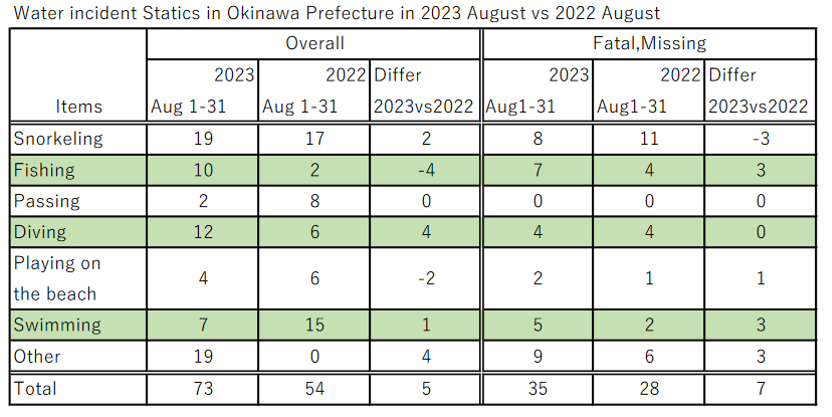
https://www.police.pref.okinawa.jp/docs/2015022200039/(Japanese only)
- Safety messages from the police
- Be very aware that water is dangerous!
- Do not underestimate the power of nature!
- Do not overestimate your own physical strength, knowledge and skills
- Wear life jackets and other buoyant equipment
- Use snorkels properly
- Do not go alone, stay with group
- Promote water accident prevention to the elderly and children
Memo from OHS
- You can learn about water safety and risk mitigation at sea in the following resource.
Water Safety (OIST e-front)
Okinawa Marine Safety (Okinawa Prefectural Police)
Updated on 8th September 2023
11th Regional Coast Guard Headquarter released water related accident statistics
According to the Okinawa times, https://www.okinawatimes.co.jp/articles/-/1207973 (Japanese only), the number of water-related accidents in Okinawa Prefecture involving middle-aged and older adults aged 50 and over is increasing. According to the Coast Guard Headquarters, the number of people over the age of 50 who have been involved in water accidents in Okinawa Prefecture this year is 106 (preliminary figures) as of August 17, with 53, or half of the total, being over 50 years old. The officials in charge of the 11 districts are urging people to take care of their physical condition and enjoy their leisure time in the sea.
Of the 40 fatalities or missing, 80%, or 30 people, were 50 years old or older.
Among water accidents, snorkeling accidents accounted for the most significant number of marine leisure accidents (17), while 12, or 70%, were 50 years old or older.
This year, the five snorkeling fatalities were not limited to middle-aged and older adults, and none were wearing life jackets.
(From OHS)
Tips for water safety:
- Avoid going alone, stay with groups. That way there will be more potential help available and a higher opportunity of prompt response in the event of an emergency.
- Obtain information on the day’s weather and sea condition.
- Postpone activities if unfavorable weather is predicted.
- Let someone know, such as your family or friends where you are going, what activity is planned, with whom and what time you expect to return. So that emergency response organization will be able to respond in early stage in case of emergency.
- Do not allow your children to swim alone. Accompany them all times and watch over them until they are out of the water.
- Securing the buoyancy by wearing life jacket or wetsuits
- Take necessary training from professional when using equipment such as underwater mask, snorkel, fins, paddle boat, SUP etc, to make sure your skills are adequate for the condition.
Updated on 1st September 2023
Okinawa prefecture has extended the period of the box jellyfish advisory to 30 September 2023
Reports of injuries from encounters with box jellyfish are on the rise this year and these creatures seem to be in abundance along Okinawa beaches.
Please visit the links for details and, the advisories include prevention measures and first aid.
【Announcement from Okinawa Prefecture】
【Advisories】
Updated on 25th August 2023
Marine safety product introduction: Personal Locater Beacon (PLB)
PLB introduction by Ministry of Internal Affairs and Communications
A PLB is a device that notifies the Japan Coast Guard via satellite when an individual fall overboard or drifts away from a vessel, etc. and reports the distress to the Coast Guard. The PLB can be used only in the case of maritime distress when the PLB is licensed as an automatic distress reporting station.
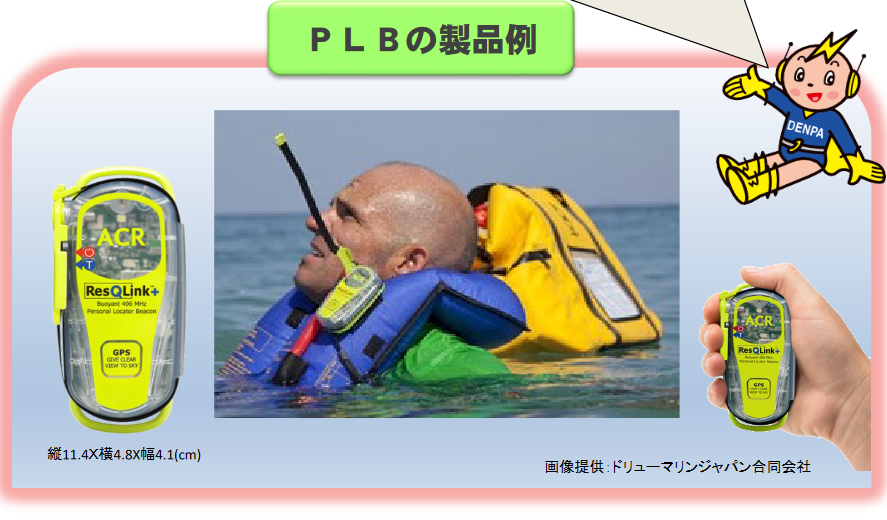
Updated on 18th August 2023
Okinawa prefectural police release warning message about Stung by Habu Kurage (Box Jellyfish)
https://www.police.pref.okinawa.jp/docs/2023081500021/
-What happened?
On August 11, two incidents of swimmers were stung by Habu Kurage on beaches in the northern part of the main island. Both were children, and one of them became unconscious after being stung, and recovered by doctor’s treatment who attended there coincidentally, then transferred to the hospital by ambulance.
-First aid
Remove the tentacles by pouring vinegar on the affected area, cool it with ice, etc., and then take to a medical institution.
Be sure to include vinegar in your beach safety kit which and be used to remove jellyfish tentacles.
-How to avoid?
Stings can be avoided by wearing reef shoes and long-sleeved rash guards and scanning the area carefully before jumping into the water.
Stay safe, and look/think before you swim.
Updated on 4th August 2023
Websites relating water safety
- Created by US Marines Camp Butler Base Safety Office
Water Safety
*Topics example: Snorkeling safety videoOcean safety video, and more
*External website links for weather and sea condition
- Created by Okinawa Prefectural Police
Okinawa Marine Safety Portal (Japanese only)
*Topic example: How to enjoy sea of Okinawa safely
Hazard map
*External website links for Windy, Weather forecast, Recommended marine business entities, and more
Updated on 21st July 2023
Typhoon #5 is approaching!
Typhoon #5 (called Tokusuri) has formed and is moving toward the Okinawa region while developing.
Category forecast when it is near Okinawa region: Very strong
|
Category |
Maximum wind |
|
Strong |
33m/sec, 64knots~44m/sec, 85knots |
|
Very strong |
44m/sec, 85knots~54m/sec, 105knots |
|
Severe |
54m/sec, 105knots~ |
Link Japan weather association jp tenki
- Anticipated situation:
Streams and ditches swollen by rain make it difficult to see boundaries, causing accidents such as falls. Landslides and landslides are also more likely to occur. Even in places that are usually considered safe, be on your guard and avoid dangerous places unnecessarily.
When a typhoon approaches and becomes a storm, there is a risk of objects being blown away by the wind, being hit by flying objects, or having your car overturned. Also, hands and fingers can get caught in doors and fences.
- Tips for action:
Avoid going out unnecessarily and wait until the typhoon has passed. Waves near the coast often become high before the typhoon approaches, and the sea level is high for some time while the typhoon passes. When a typhoon is coming, do not go out to see high waves at sea or near the coast. Stay home, stay safe!
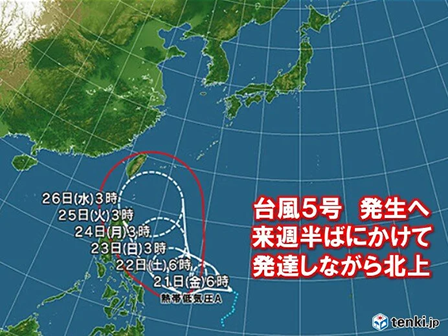
Updated on 14th July 2023
Diving safety for drift diving, lesson learnt from the incident at Itoman July 19, 2023
What is Drift diving?
Divers enter the water from a boat and move through the water with the current.
The boat follows the diver by following the SMB(Surface Marker Buoy)towed by the diver, by tracking the exhaust bubbles and predicting where the diver will surface and meet up with the diver.
Fact
Weather: Cloudy, wind 10 meters south-southwest, wave height 2 meters
The number of divers: 5 guest divers and two instructors.
Time order
- 11:50: 600 meters northeast of Lukang Reef: Boat captain found no diver beneath the SMB, then called 118 (Coast Guard). Coast Guard and police helicopter began search and rescue operation.
- 13:55 Found 6 persons with no injuries at 4 km southeast of Lukang Reef,
- 14:45 Found one person (who chased the boat) with no injury at 1 km southeast of Lukang Reef,
Lesson learnt from this incident
- All the members understand overall schedule and procedure on in case of trouble. Check with the guide/instructor and boat captain. Example: weather/sea condition, time schedule, dive plan (team formation, dive path, maximum depth, dive time, residual pressure)
- Know that boat and divers may be drifted in different direction.
- Guide is to dive according to the dive plan
- Boat captain keeps eye on not only the diver position, but also be aware of other boat traffic around them, and time management.
- To provide communication device with boat captain, such as
a) Whistle, dive buzzer 【audio device】
b) SMB, light, signal mirror 【visual device】
c) GPS, PLB(Personal Locator Beacon)【radio device】
https://www.soumu.go.jp/soutsu/hokkaido/E/tetuzuki/marineplb.html


Information source
https://www3.nhk.or.jp/news/html/20230619/k10014103531000.html
Updated on 7th July 2023
Safe and secure life on leisure in sea and river
The Okinawa prefectural police are taking various measures to prevent water accidents so that many people can enjoy leisure activities in the sea and rivers while coexisting with water.
Remember that water accidents are not someone else's problem but that everyone involved in water can become a party at any time.
Statistics
|
|
Cases# |
# Victims |
#Missing |
# Fatal |
|
2020 (Jan-Dec) |
106 |
143 |
2 |
40 |
|
2023 (Jan-May) |
33 |
60 |
0 |
14 |
To prevent drowning accidents
- Be aware that water is dangerous
Humans are constantly breathing to live. Even if they cannot move or faint, they can still survive in an environment where they can breathe, but not in water. Always be aware that one wrong decision may lead to death, and try to mitigate the risk.
- Please don't underestimate the power of nature
Humans, no matter how good they are at swimming, cannot win against the forces of nature. ( Example: cannot swim against the rip current)
Okinawa Island faces the open ocean and is directly affected by tidal currents, waves, and wind.
When a typhoon is approaching or the weather is unfavorable for the activity, never go near the coast. There have been cases of people coming to the shore out of curiosity, with disastrous consequences.
- Do not overestimate your own physical strength, knowledge, and skills
Swimming or floating in water is a tough exercise that consumes your physical strength. Always consider your age, physical strength, and the time you can spend in the water area, and never enter the sea if you consume alcohol or are feeling unwell.
Also, don't let your guard down just because you have experience of leisure activities on the sea or river. Collecting information in advance about the presence or absence of dangerous spots and precautions is essential.
- Wear a buoyancy device such as a life jacket
When snorkeling, fishing, SUP, canoeing, clam digging, etc., be sure to wear a life jacket or a buoyant wet suit.
Buoyancy floats the body on the surface, making it easier to secure breathing, and it also helps preserve physical strength in the event of a water accident.
- Use your snorkel correctly
Snorkeling is one of the marine leisure activities that you can easily access. Still, there have been many water accidents involving local residents and tourists, such as ingesting seawater due to improper use of snorkels.
When snorkeling, wear the following 4-piece set and enjoy snorkeling like floating. ① Mask, ② snorkel, ③ Fins, ④ Life jacket: Taking proper training before going to the sea is highly recommended.
- No solo participant
Leisure on the sea or river alone carries the risk of a serious water accident. To safely enjoy marine leisure, please have company and never lose sight of another person. It also leads to arranging prompt rescue calls in the event of a water accident.
- Encourage older people and children to prevent accidents
People aged 50 and over account for 60% of the deaths caused by water accidents in Okinawa, and the fatality rate of water accidents increases proportionally with age.
Encourage older people who go out to catch fish or shellfish to wear life jackets and refrain from water activity when feeling unwell.
Also, do not allow children to swim alone; even if a guardian accompanies them, watch over the children until they get out of the water.
Shop selection for the marine activities
Okinawa Prefecture Ordinance Concerning Prevention of Water Accidents and Ensuring the Safety of Swimmers (Abbreviation: Water Safety Ordinance)
Okinawa Prefecture has enacted the Water Safety Ordinance to prevent water accidents to protect sea users' lives, bodies, and property.
- Notification is required to engage in the marine leisure business
In Okinawa prefecture, some industries require notice the Public Safety Commission when operating a business related to marine leisure. (Shop operating without the notice is subject to penalties.)
If you use a marine leisure shop, please confirm that they notified the Public Safety Commission, and please provide the commission information if you found the non-notified shop.
〈Links to police website: industries that notified: Japanese language〉
- Beach 39 beaches notified
- Scuba diving business 1103 shops notified
- Snorkeling business 1031 shops notified
- Pleasure boat business 1307 shops notified
Memo from OHS
- You can learn about water safety and risk mitigation at sea in the following resource: Water safety




